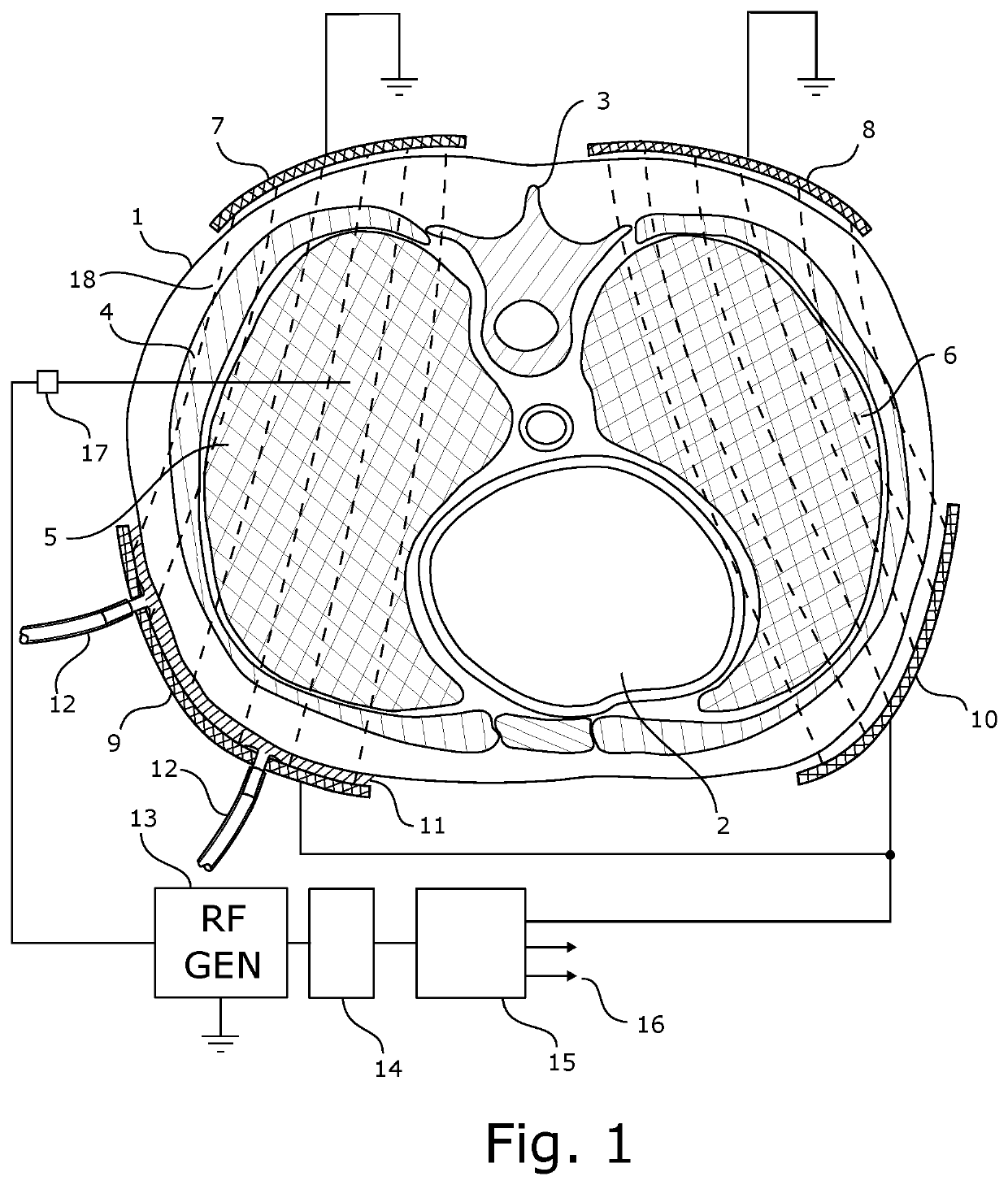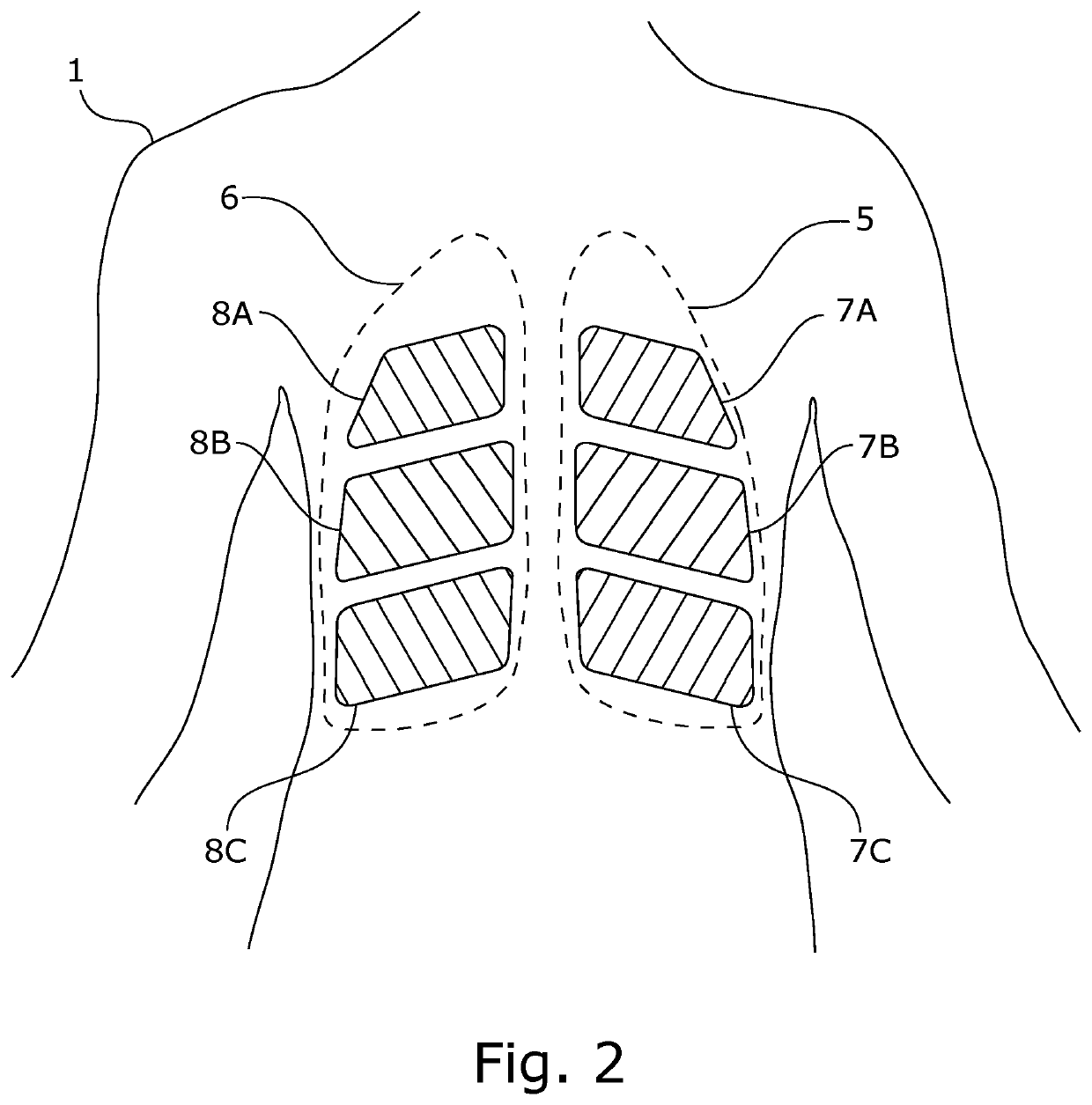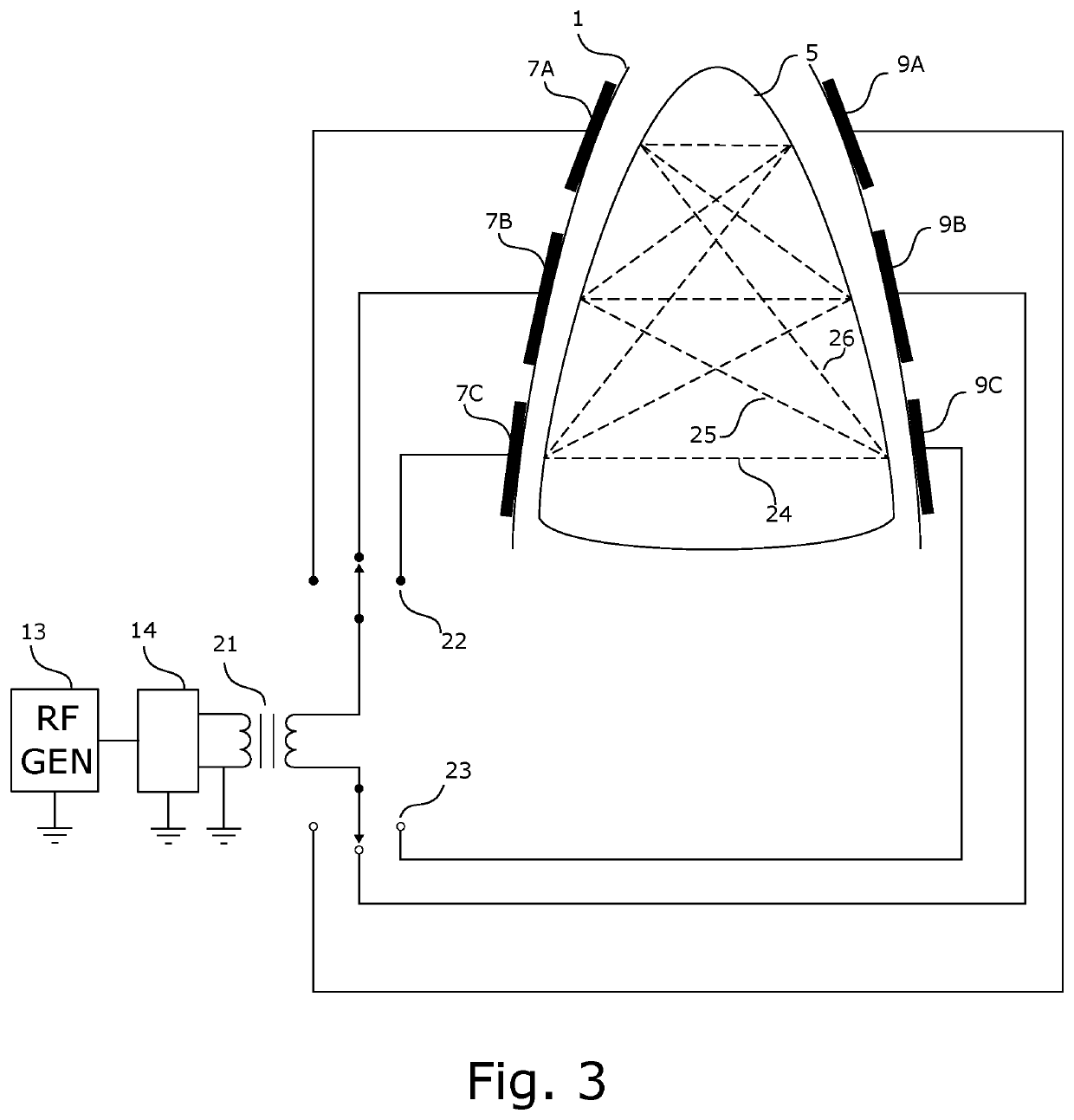System for treating unwanted tissue using heat and heat activated drugs
a technology of unwanted tissue and heat-activated drugs, applied in the field of medical devices, can solve the problems that the diaphragm cannot move up and down naturally, the air trapped in the diaphragm cannot be retracted naturally, etc., and achieve the effects of minimizing heat, minimizing penetration into adjacent organs, and improving electrical coupling
- Summary
- Abstract
- Description
- Claims
- Application Information
AI Technical Summary
Benefits of technology
Problems solved by technology
Method used
Image
Examples
Embodiment Construction
[0012]One aspect of the invention uses the fact that healthy lung tissue has much larger blood circulation than diseased tissue such as a lung affected by emphysema. When a non-contact heat source, such as radio-frequency (RF) energy, is directed at the lung the heat will be carried away from the healthy tissue by the blood flow while the diseased parts of the lung will heat up. When diseased tissue is heated up to around 60 deg C. it can lose the ability to expand back after lungs are collapsed (pneumothorax), because of damage to the surfactant layer and other physiological reasons. Causing the areas affected by emphysema to collapse prevents them from interfering with normal operation of the healthy parts of the lung, similar to what can be achieved by surgically removing the diseased part. Other mechanisms may exist that do not require pneumothorax: the heated diseased area can lose volume through ablation, fibrosis or other mechanisms and allow healthy lung tissue to fill the v...
PUM
 Login to View More
Login to View More Abstract
Description
Claims
Application Information
 Login to View More
Login to View More - R&D
- Intellectual Property
- Life Sciences
- Materials
- Tech Scout
- Unparalleled Data Quality
- Higher Quality Content
- 60% Fewer Hallucinations
Browse by: Latest US Patents, China's latest patents, Technical Efficacy Thesaurus, Application Domain, Technology Topic, Popular Technical Reports.
© 2025 PatSnap. All rights reserved.Legal|Privacy policy|Modern Slavery Act Transparency Statement|Sitemap|About US| Contact US: help@patsnap.com



